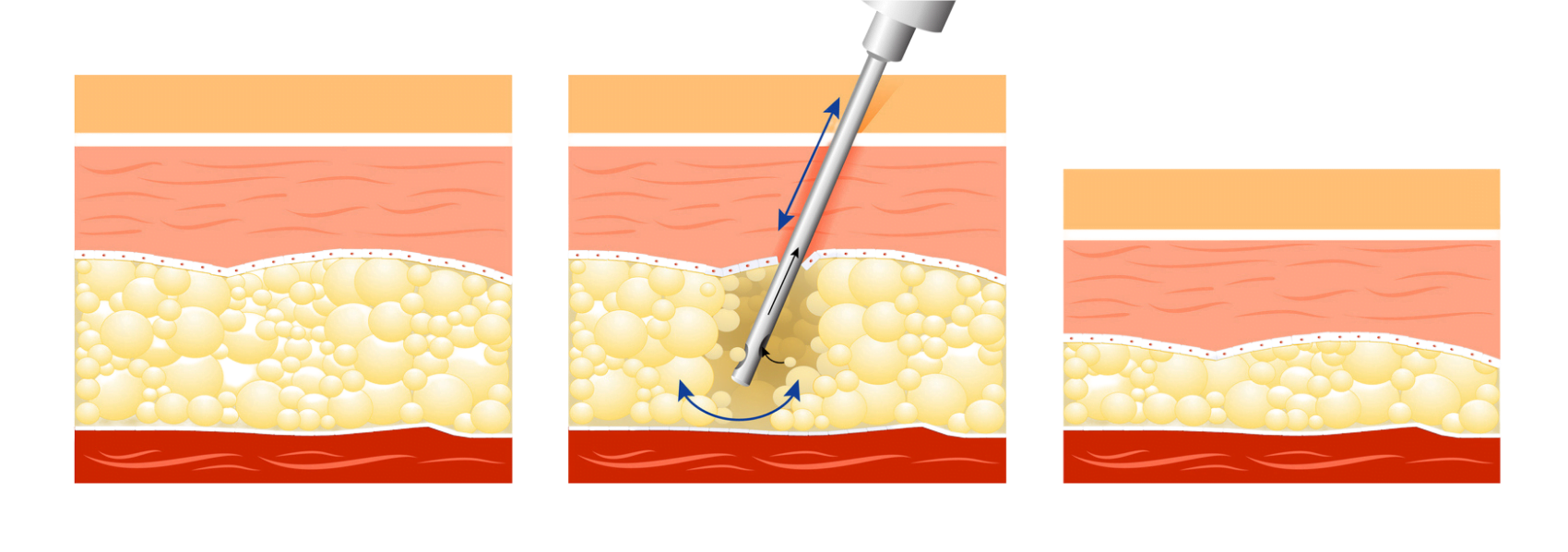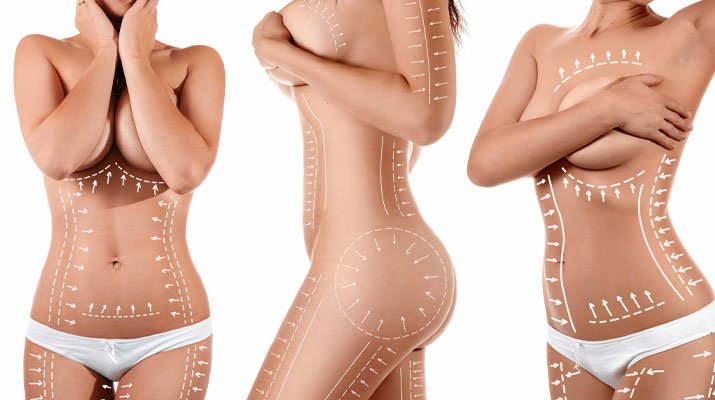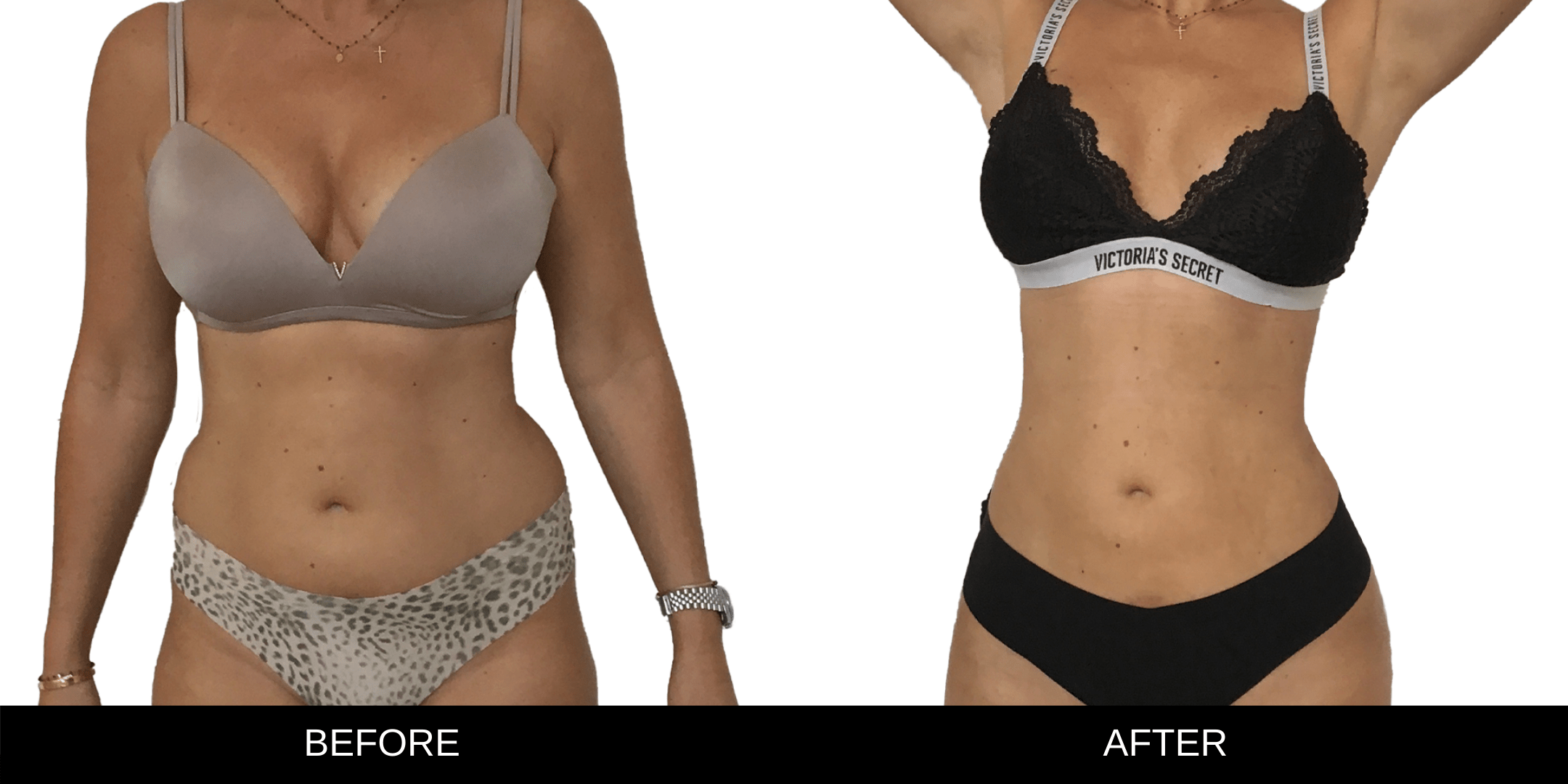
What is liposuction?
Liposuction removes (localised) fat deposits that are resistant to diet and physical exercise. This so-called stacking fat accumulates in the areas around the hips, upper legs (cellulite), stomach and upper arms, especially for women – for men, around the loins, abdomen, stomach and neck area. The knees, the face, the ankles, the back and the buttocks are also areas where it can be challenging to get rid of accumulated fat.
How does liposuction work?
Liposuction is a surgical procedure that removes body fat by suctioning fat cells out of the body using a small cannula (narrow stainless-steel tube) connected to an aspirator (medical-grade suctioning system).
The PAL-System (Power Assisted Liposuction) helps to remove the fat without damaging the underlying tissue. The surgeon can work with greater precision, thanks to the PAL-system as it less physically demanding for the surgeon to use, also reducing the risk of asymmetrical results.
When am I a suitable candidate for liposuction?
Liposuction surgery is used to treat excess fat in the following areas: stomach, buttocks, hips, love-handles, saddlebags, thighs, calves, ankles, back, arms, neck and breasts (including male gynaecomastia or breast reduction). Liposuction is equally effective in men and women.
Your doctor ultimately decides whether you are a good candidate for the Power-Assisted Liposuction (PAL). However, there are a few other factors that may help you to choose:
- You have excess fat that will not go away with diet or physical exercise
- You have fat deposits in areas that are out of proportion with the rest of your body.
- You have fat deposits in areas with minimal amounts of excess skin and good skin elasticity.

PAL can be used when performing a tummy tuck, a panniculectomy (the removal of hanging fat and tissue, usually after massive weight loss) or bariatric surgery.
Power-assisted liposuction – PAL (machine operated), can be used on patients with a lot of excess weight which they wish to have removed, or on patients who are merely looking for more definition in their body, sharper contours and a sculpted body.
Surgeons often prefer to use PAL on patients who are looking for smoother body contours and more definition. PAL enables the surgeon to exercise even greater control and therefore achieve better results. As a result, body sculpting of a more challenging nature can be performed on many parts of the body.

CONSULTATION
After your initial consultation with the plastic surgeon, you will meet with our consultant. The purpose of this talk is to tell you everything you need to know about your liposuction procedure.
After everything has been discussed the plastic surgeon will decide whether you are a suitable candidate for liposuction. The surgeon will ask you questions regarding your health, medical history and any possible medication you may be using. Should you use blood thinners, then you should stop using them at least one week before the treatment.

What can I expect after having had liposuction done?
A liposuction treatment given using a local anaesthetic means that you may go home half an hour after your surgery. A liposuction given using a general anaesthetic means that you are likely to stay in the clinic for three to four hours after your surgery. You will be moved to the recovery room where your blood pressure and heartbeat etc. will be monitored. You will be in the recovery room for about half an hour. After which you will stay in bed for a further three to four hours in our day ward.
You may go home as soon as the nursing staff and the anaesthetist have given their approval. You must rest for the first few days after your operation. After receiving treatment with an anaesthetic, you should only consume light digestible foods, such as a rusk biscuit and drink water or tea when you are back home. Start with small amounts to avoid feeling nauseous or vomiting. This will also reduce the risk of haemorrhages and congestion in the wound. You must also make sure that you drink plenty of fluids.
Most patients use pain killers in the first week or two; however, you should consult your doctor before you take any aspirin or other anti-inflammatory medications. The swelling and bruising will subside over the course of a few weeks.
Some surgeons leave the small incision open to allow drainage. Other surgeons suture the small incision with a single stitch. In both cases, it is normal that some blood will seep from the wound. Therefore, you should use absorbent padding and wear a compression garment after your operation. The small incisions will heal and gradually disappear over the following months. In the end, they will be barely visible.
Some patients return to work after a couple of days. However, for most patients, it takes a couple of weeks before they can fully resume their daily activities.
Any swelling has usually disappeared within four weeks. It is important to note that the final results of your liposuction will not be fully visible for several months.
Smoking
For a wound to heal beautifully, quickly, and as nicely as possible, it must get enough oxygen-rich blood flowing through it. That’s why we advise you to not smoke before the operation. The nicotine in the cigarettes narrows the blood vessels, which in turn reduces the blood flow to the wound. Not only this, but tobacco smoke contains carbon monoxide which restricts the amount of oxygen in your blood.
Finally, we would like you to be aware that smoking affects your condition and weakens your immune system.
All these factors increase the risk and frequency of complications in the healing process for those who do smoke rather than for those who don’t. We advise you to stop smoking at least four weeks before your operation and until at least two weeks afterwards.
LIPOSUCTION BEFORE AND AFTER




